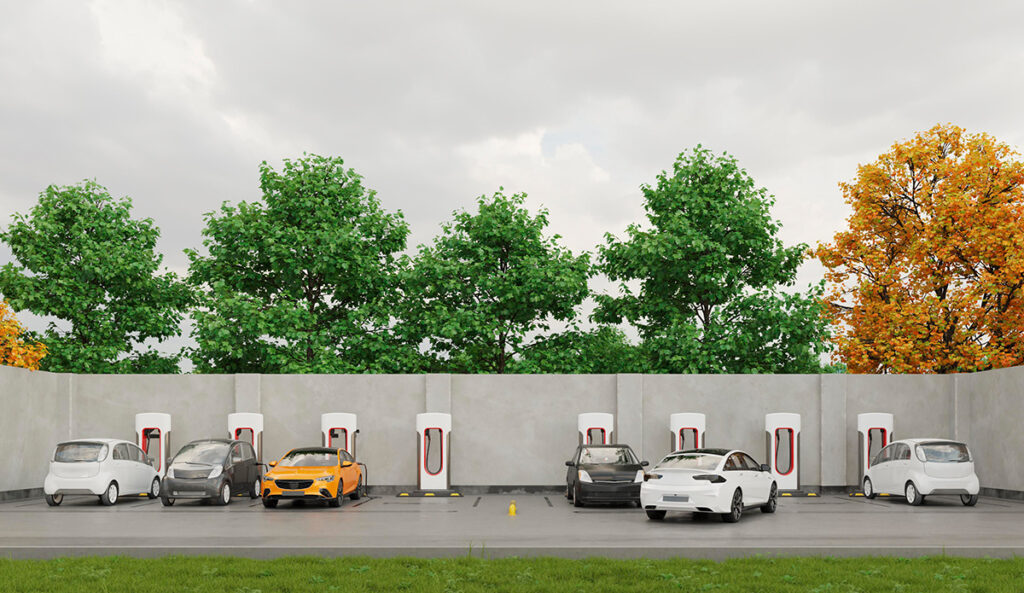What Are The Different Types of Electric Cars?

Battery Electric Vehicles (EV)
A battery electric vehicle (BEV) is an EV that uses a battery instead of a combustion engine like regular cars. Therefore, getting one eliminates the need for a trip to the gas station. Rather, you’ll have to depend on a public/private charging station or the car’s regenerative braking system.
The charge port connects the car’s onboard charger to an external power source. On the other hand, its onboard charger must convert the AC from the grid to DC, which the battery can store. The EV will also have to convert the DC to AC to accelerate.
The battery also charges a bit while driving as the regenerative braking system converts kinetic energy to electricity. Remember, the higher the battery’s capacity, the higher the driving range.
EVs use a wide range of batteries, with the most common being Lithium-ion batteries. Other popular EV batteries include nickel-metal hydride and lead-acid batteries.
The lack of an engine also makes EVs quieter than other cars, which is good for the environment. Hence, they’re the best option for reducing noise pollution.
Plug-in Hybrid (PHEV)
Unlike the BEV, which depends solely on electricity, a plug-in hybrid also uses fossil fuel. Therefore, we call it a 2-in-1 car, as it comes with an electric motor and a combustion engine. Like a BEV, you can charge its battery using a charging port or regenerative braking.
One of its main advantages over a BEV is that it runs on electric power until the battery runs low and then switches to gas.
Therefore, you can’t avoid gas station visits and CO2 emissions with a PHEV. But, it comes with the advantage of driving long distances as you have two power options. You can also save on fuel by using electricity for short trips.
Self-Charging Hybrid (HEV)
You should get a self-charging hybrid if you can’t access a charging port but still need an EV. Generally, a self-charging hybrid uses a regenerative braking system to charge the battery.
Hence, it’s not the same as the cars above that use the grid and kinetic energy from the braking system to recharge.
The PHEV and the HEV have several similarities as they’re both hybrids. Therefore, you may not notice the difference between the two until you analyze how they work. That’s when you’ll realize that the HEV doesn’t have to be charged when the battery is low.
Unfortunately, its electric range is shorter than a plug-in hybrid. It can still use electricity for short trips but at a lower speed. That’s because its battery supports the combustion engine rather than working as an equal power source.
The battery can be beneficial in a traffic jam or a car park as you’ll cruise a short distance without spending on fuel.
Mild hybrid (MHEV)
Another unique hybrid that can help you lower your fuel consumption is the mild hybrid. Unlike the other hybrid cars, the mild hybrid can’t function fully on an electric motor.
Its electric motor is mostly there to boost the engine. Hence, a mild hybrid uses or stores the kinetic energy generated by the braking system.
Its motor works when the car brakes, stops, or accelerates rapidly. This makes coasting with your engine off possible, thereby saving on fuel.
A mild hybrid doesn’t promise zero emissions like an EV or a plug-in hybrid, but it lowers it more than a traditional car. Further, you don’t need to find a charging station every so often; thus, it’s convenient. Another benefit is a mild hybrid doesn’t limit your driving range because the battery is empty.
